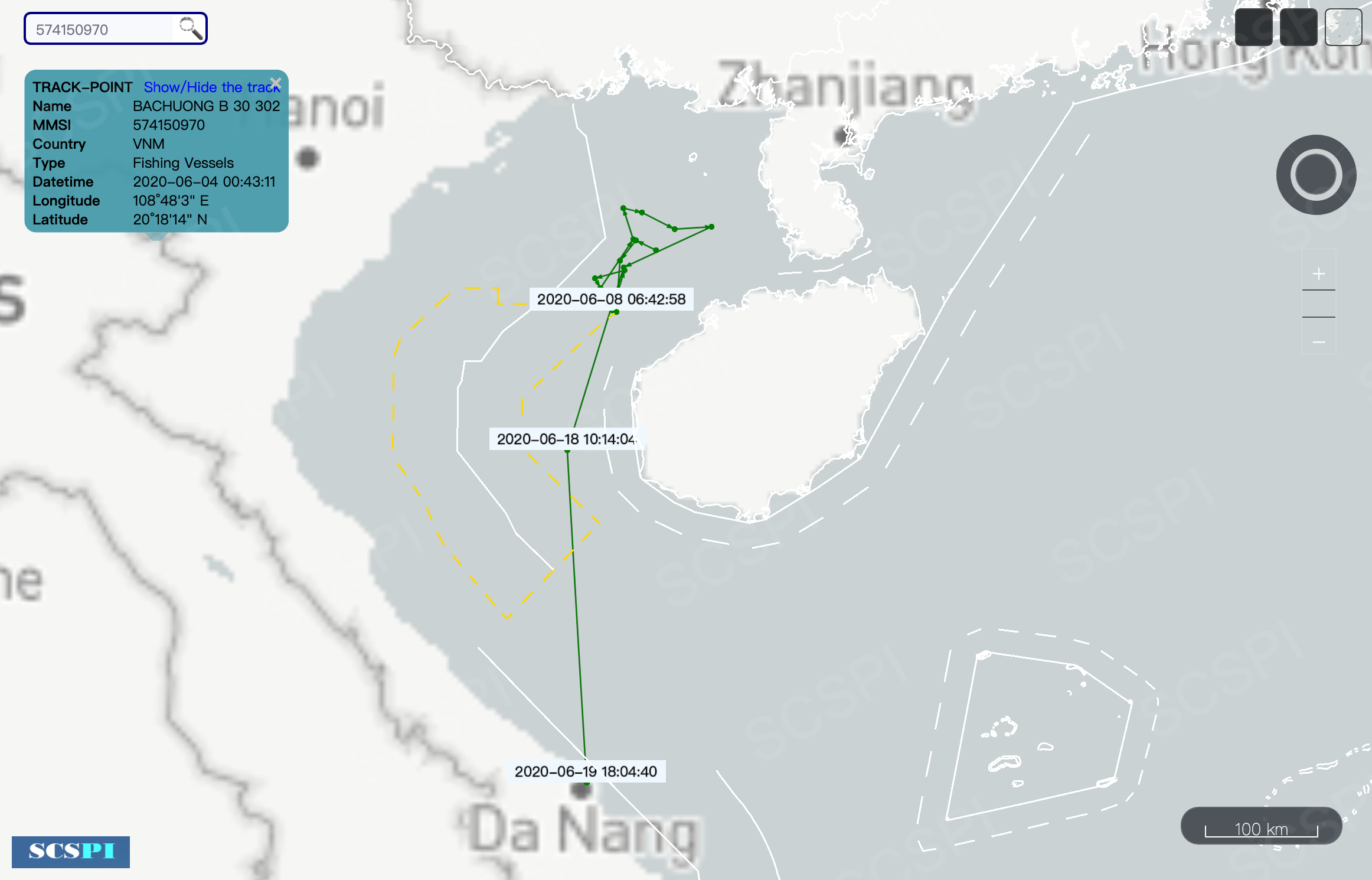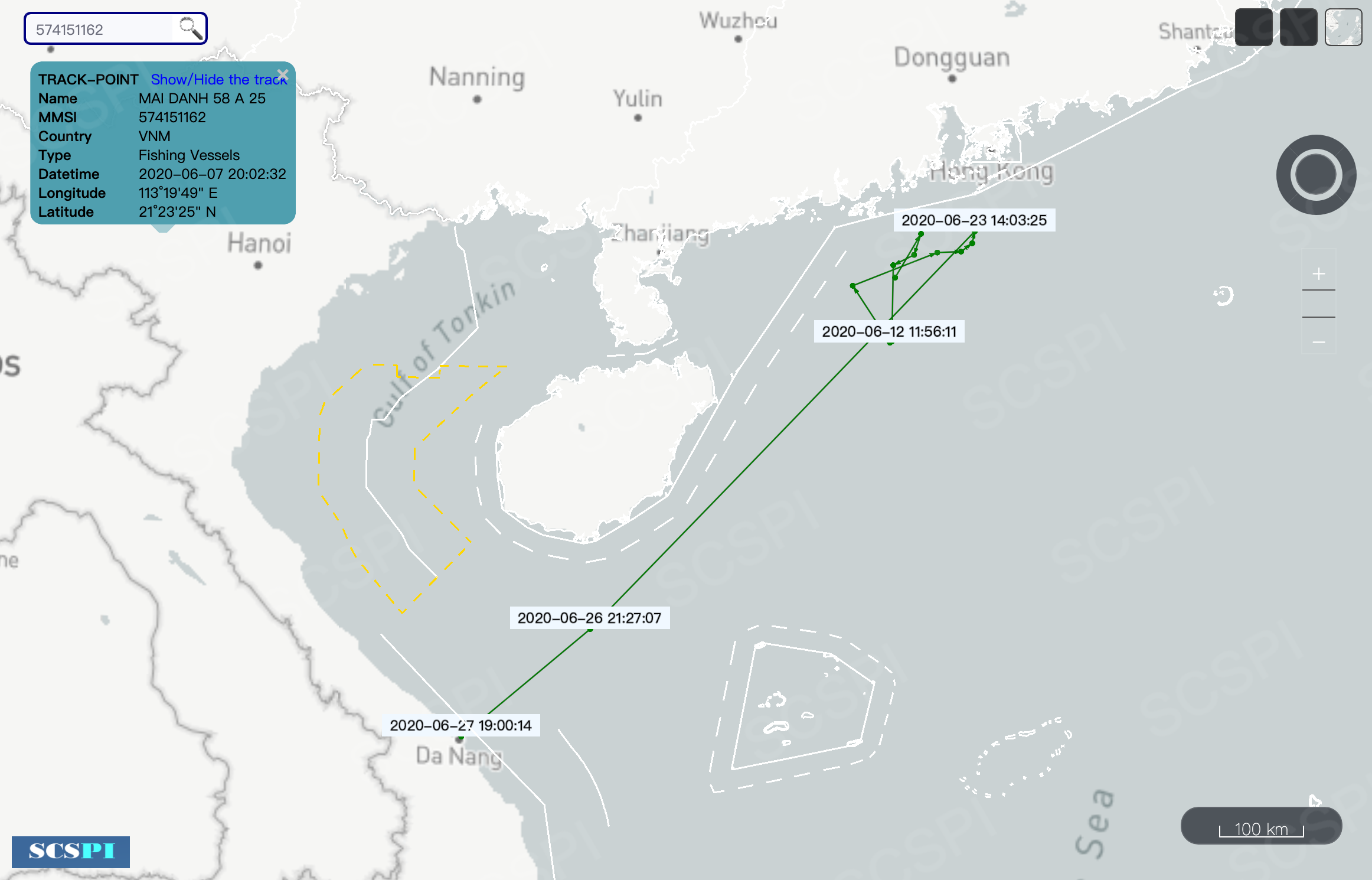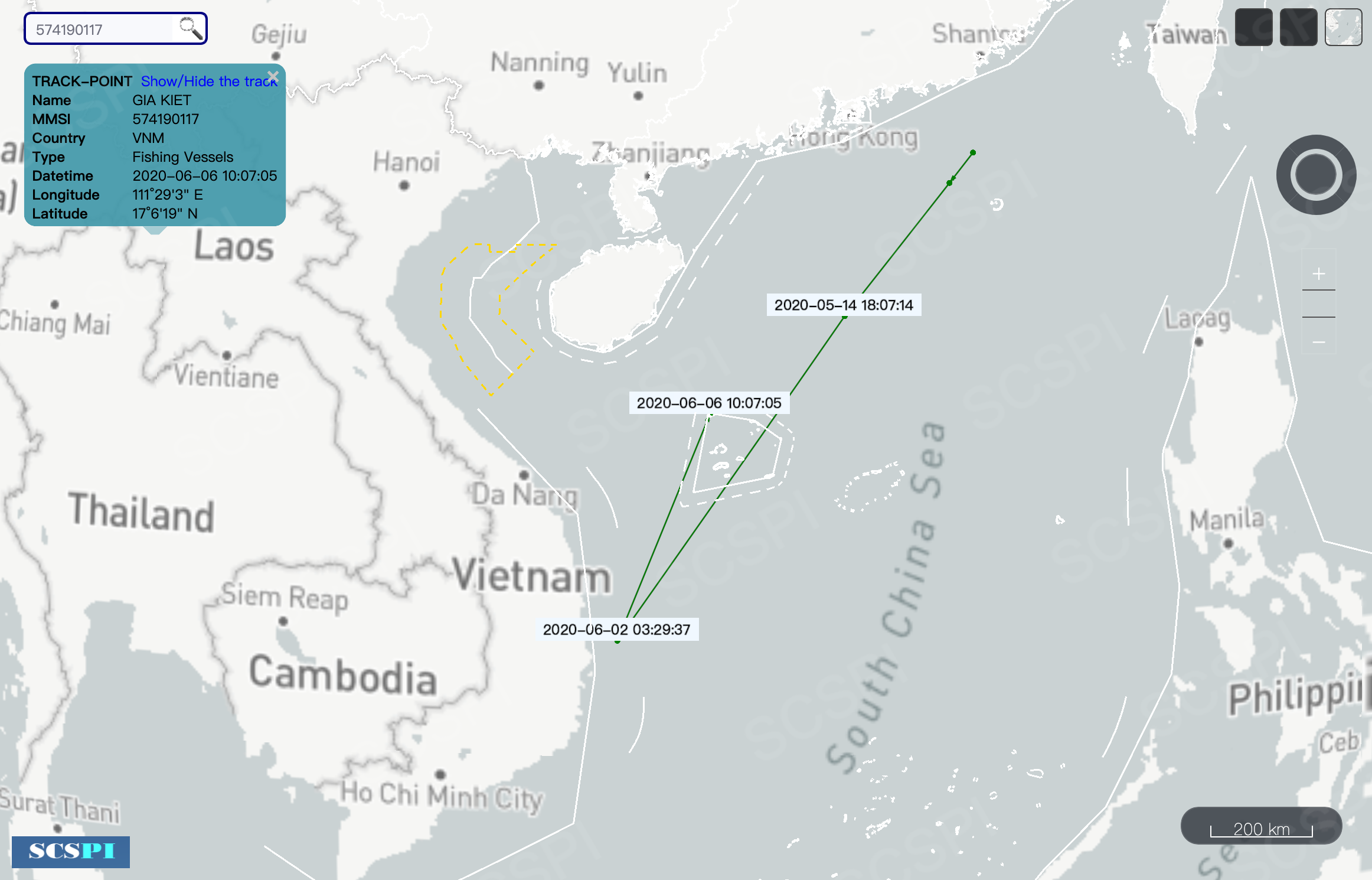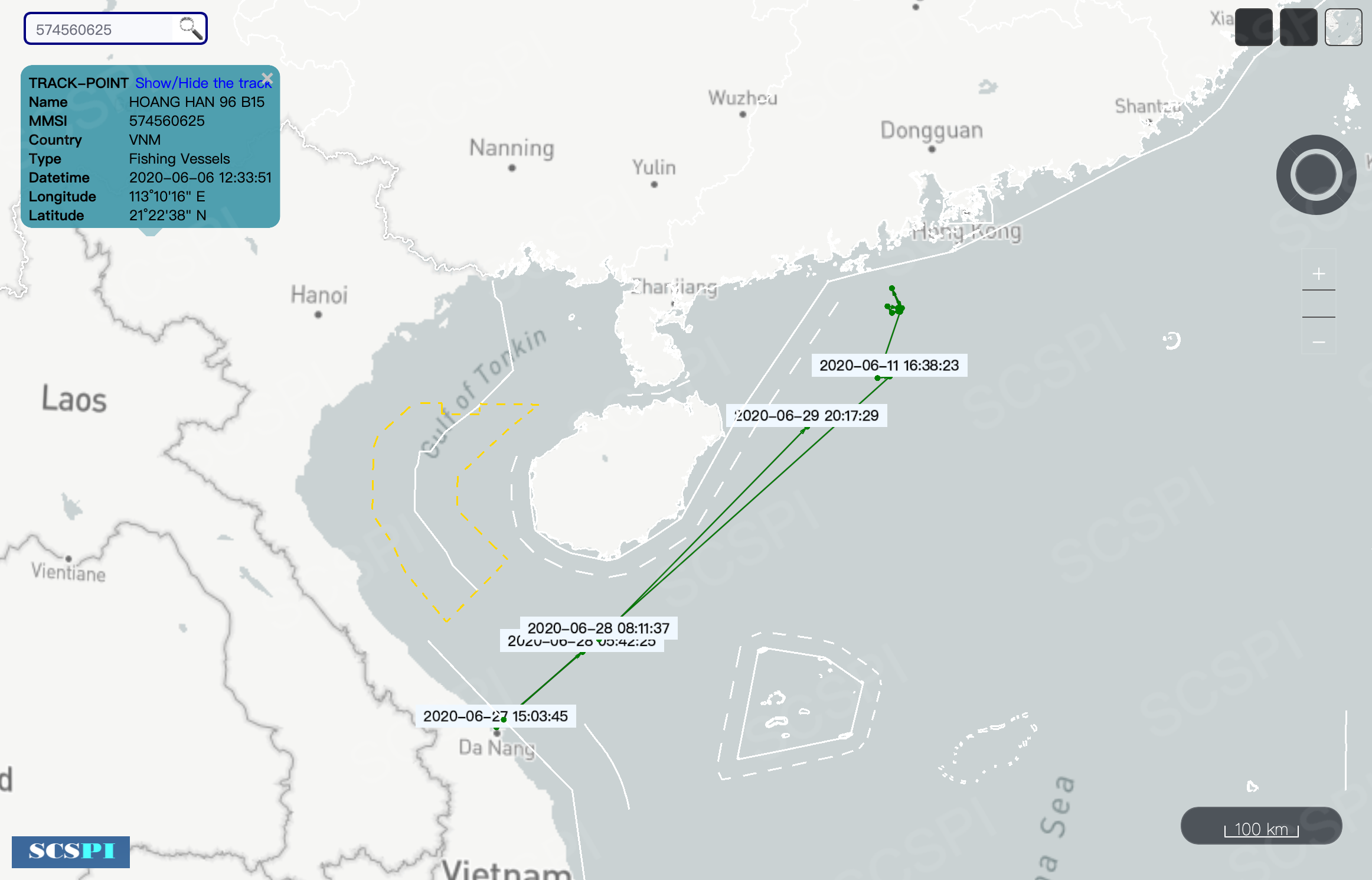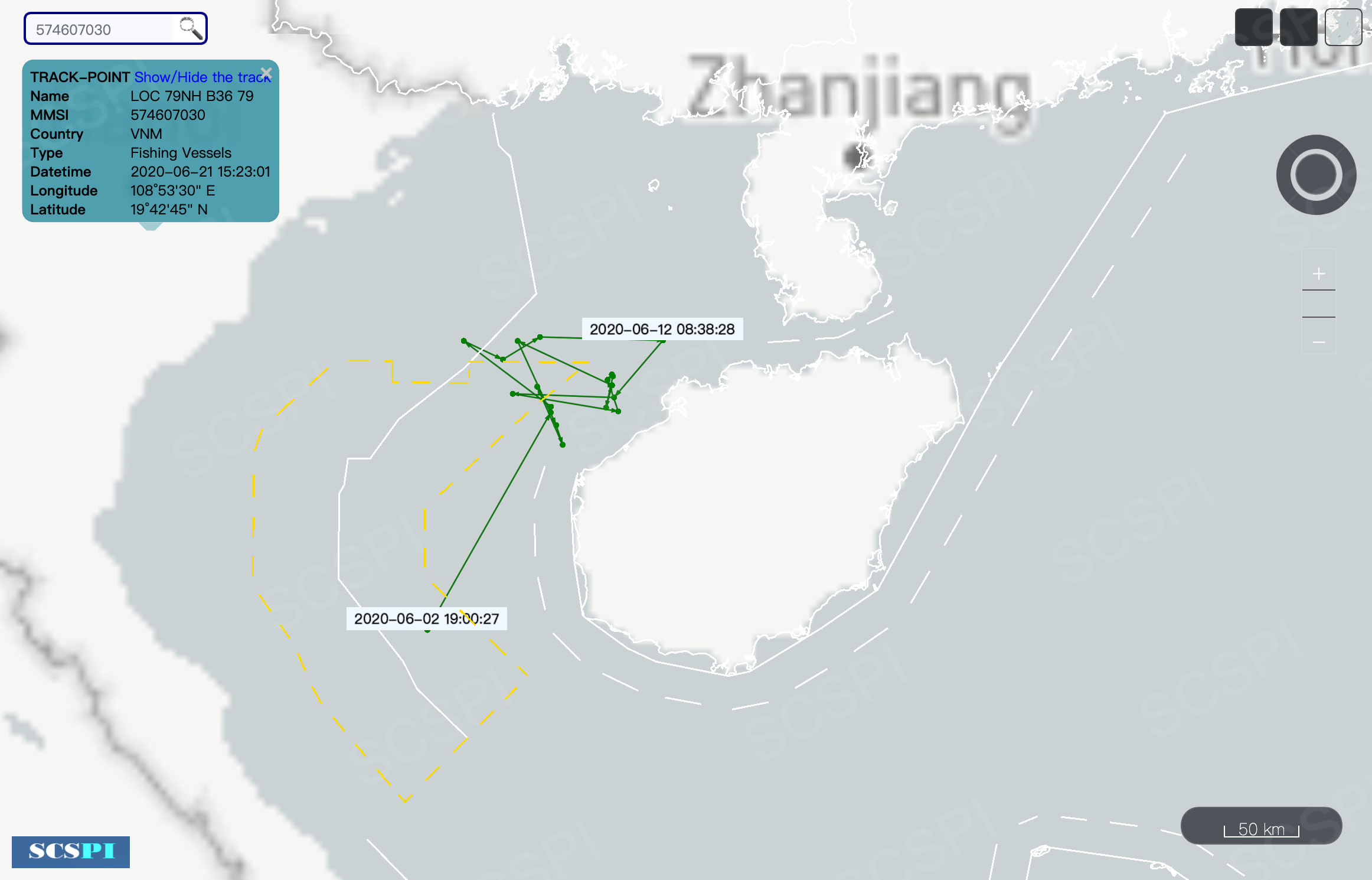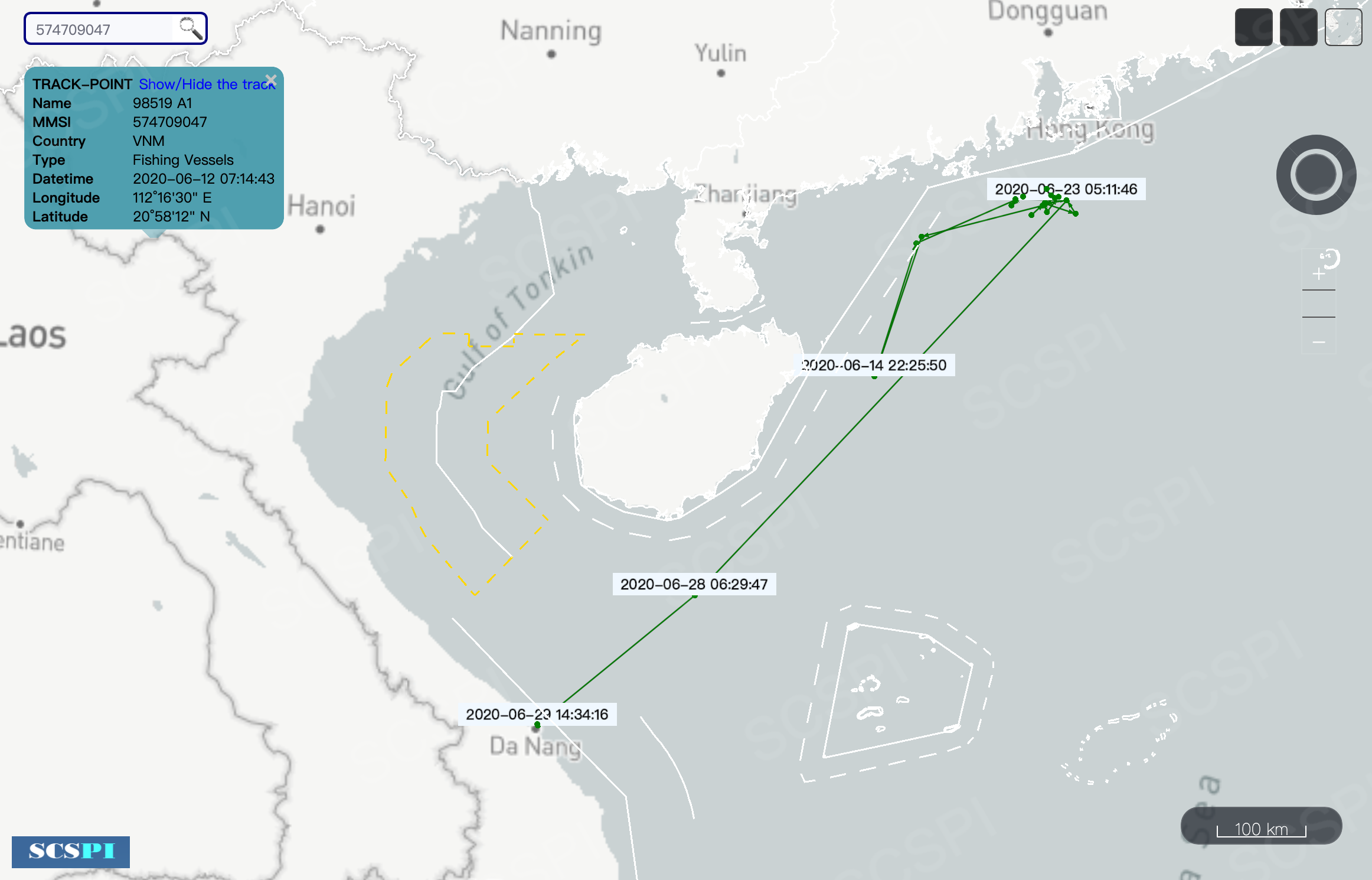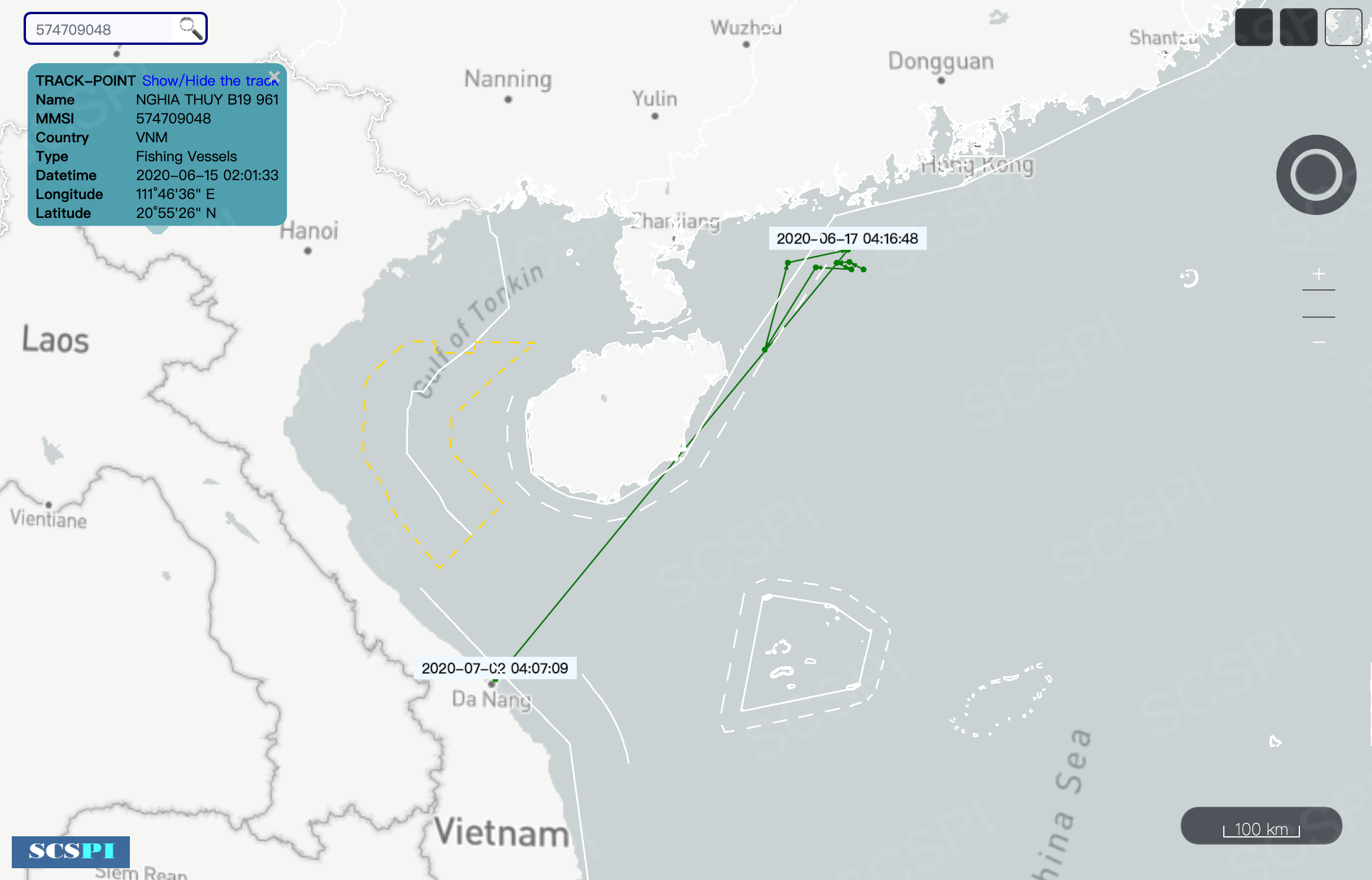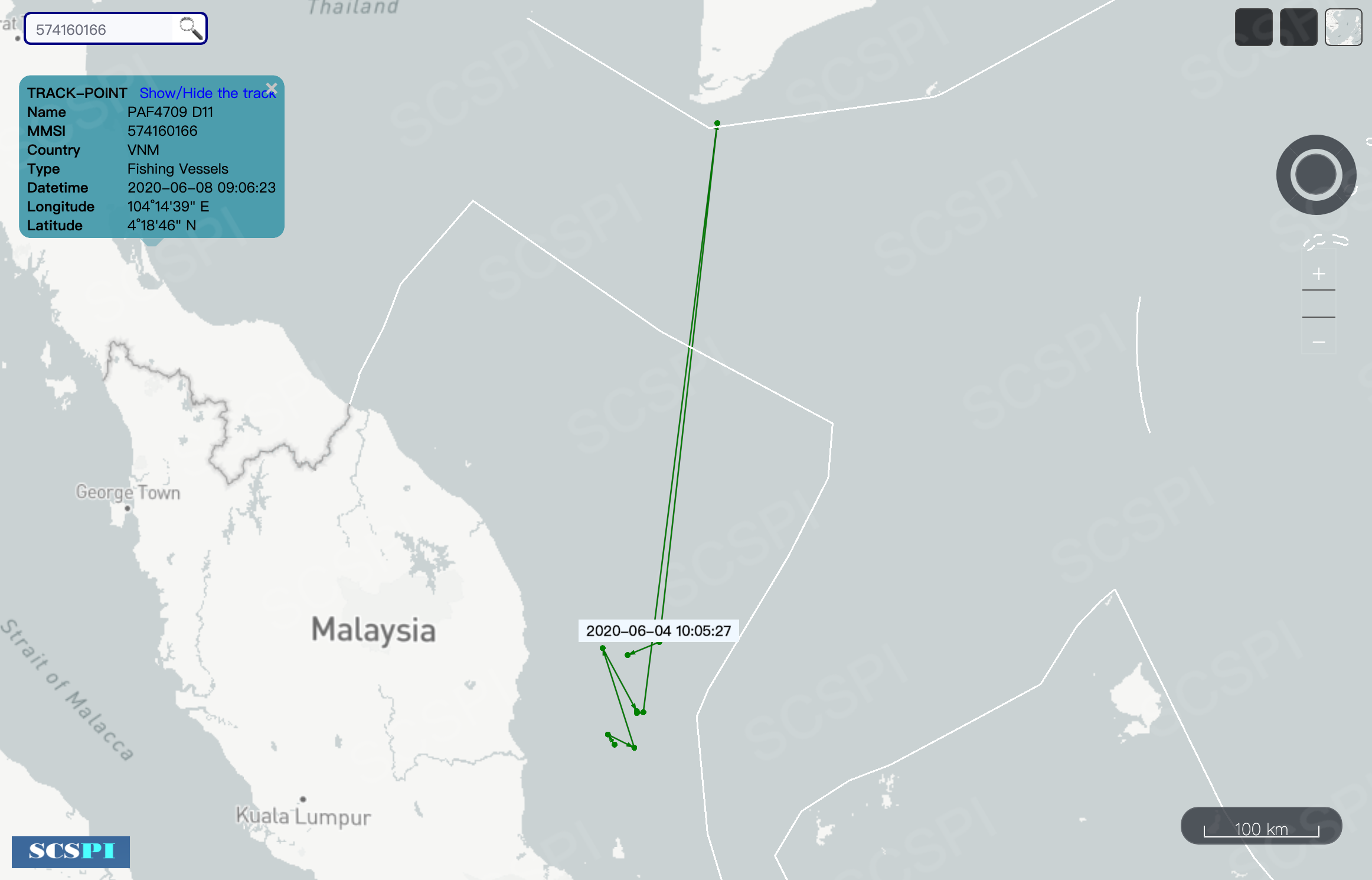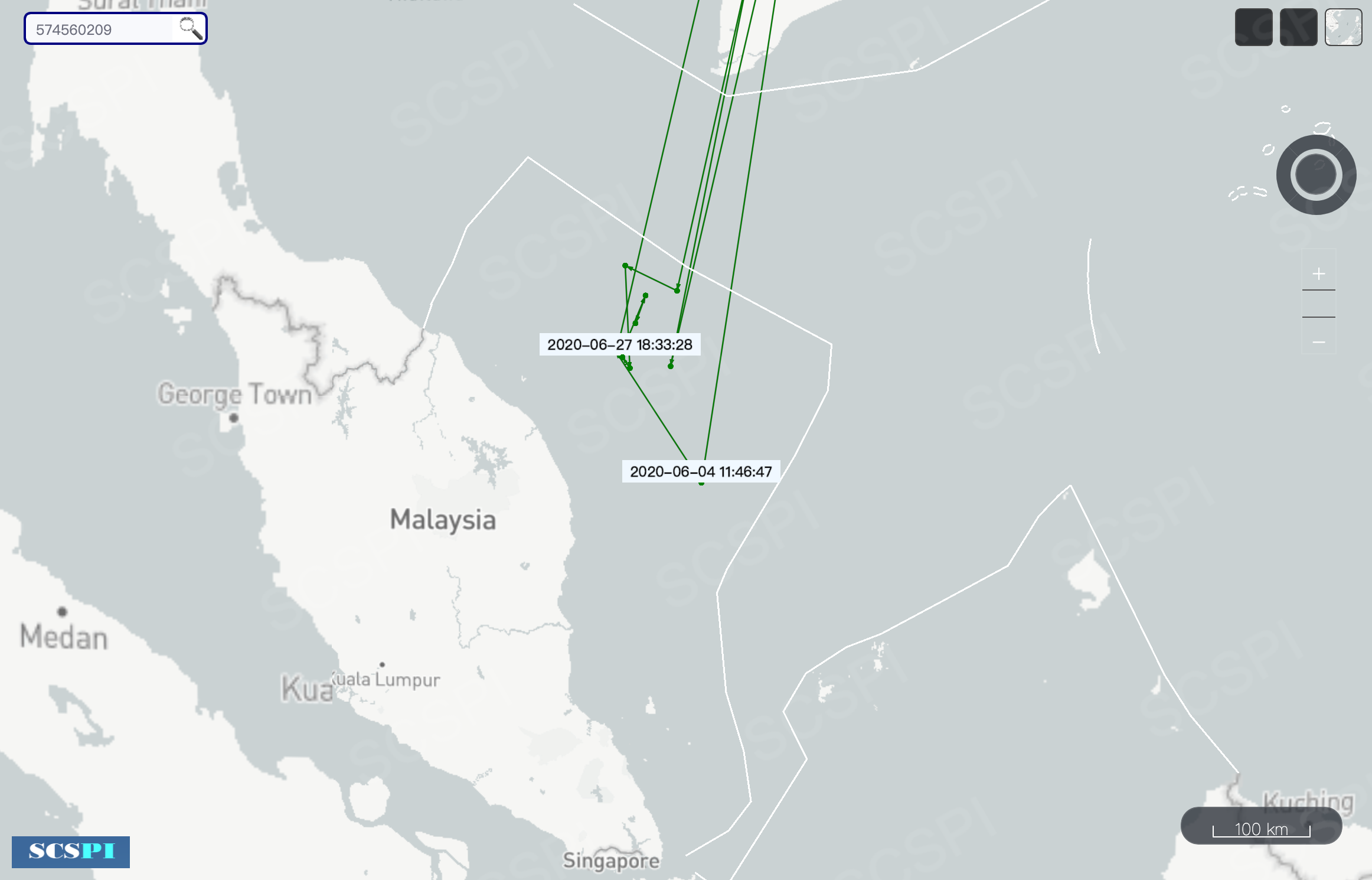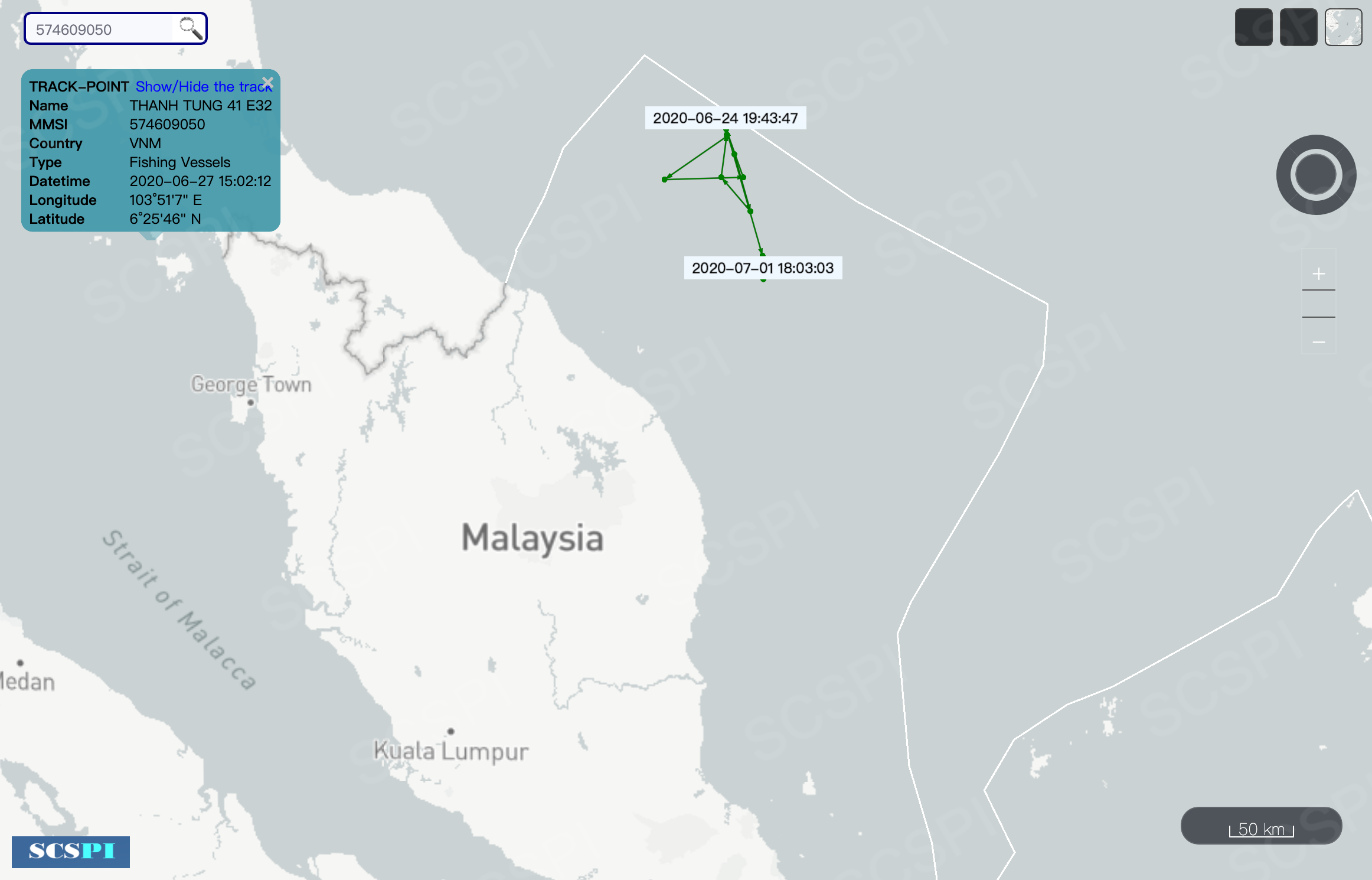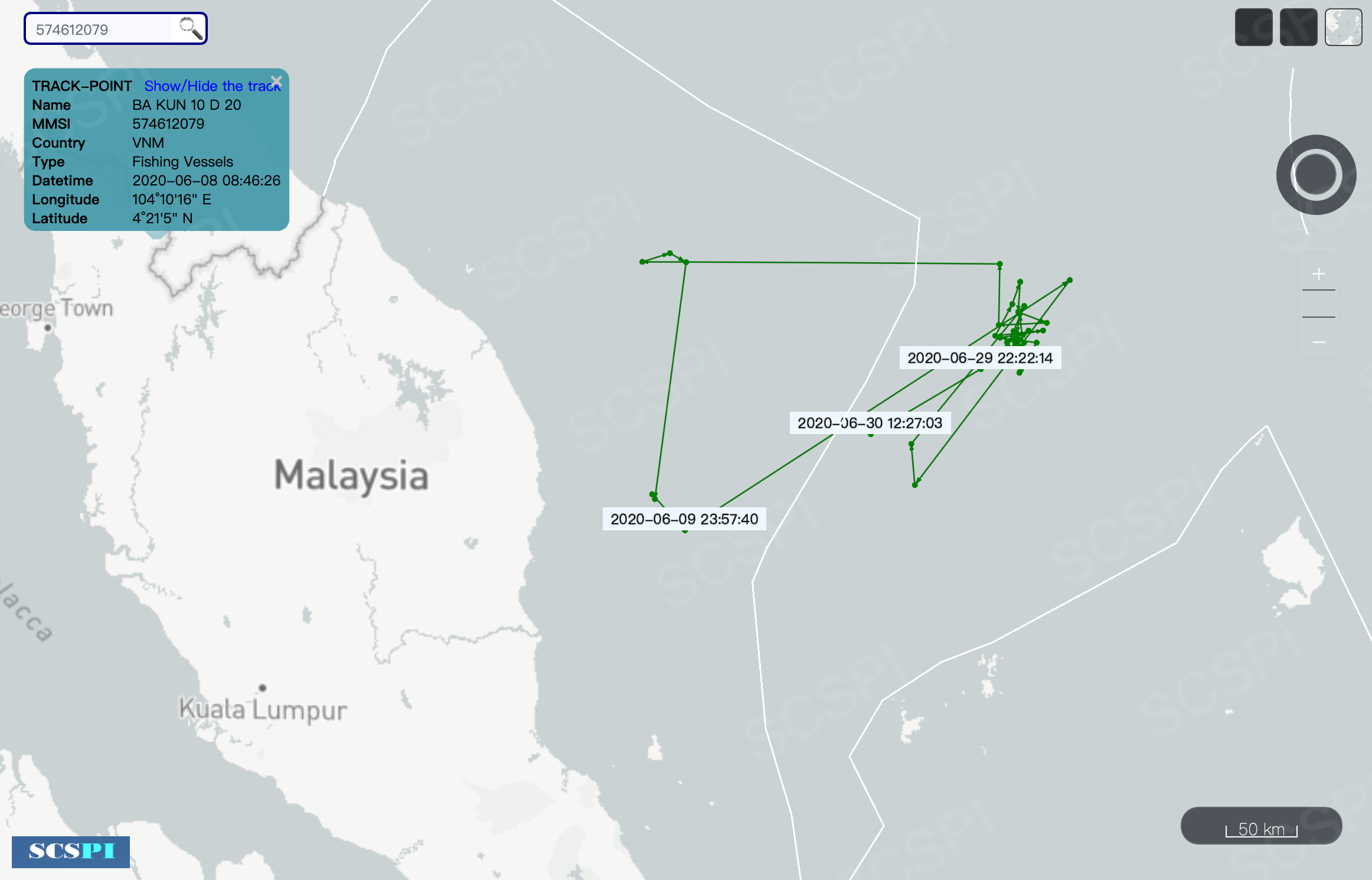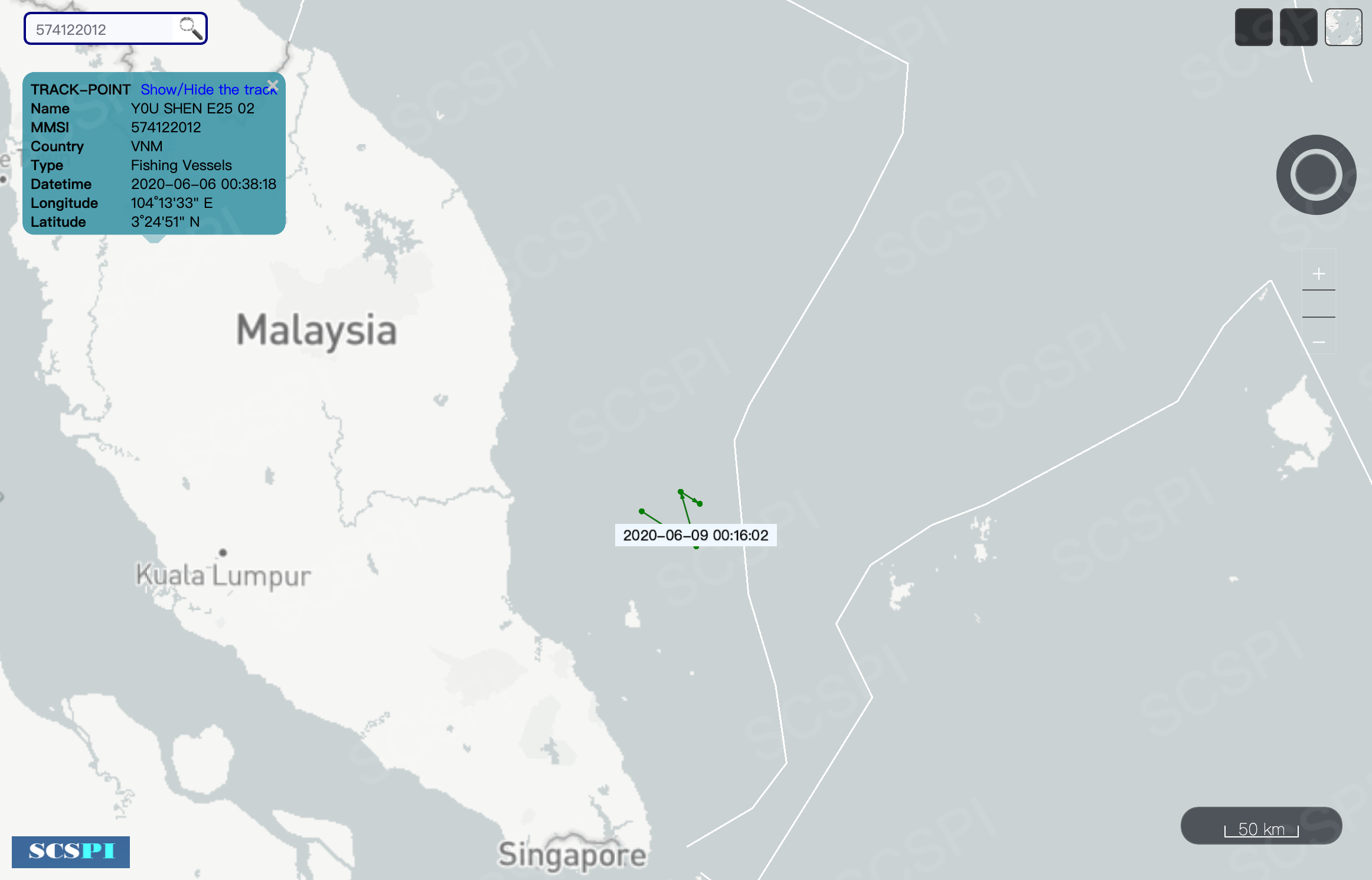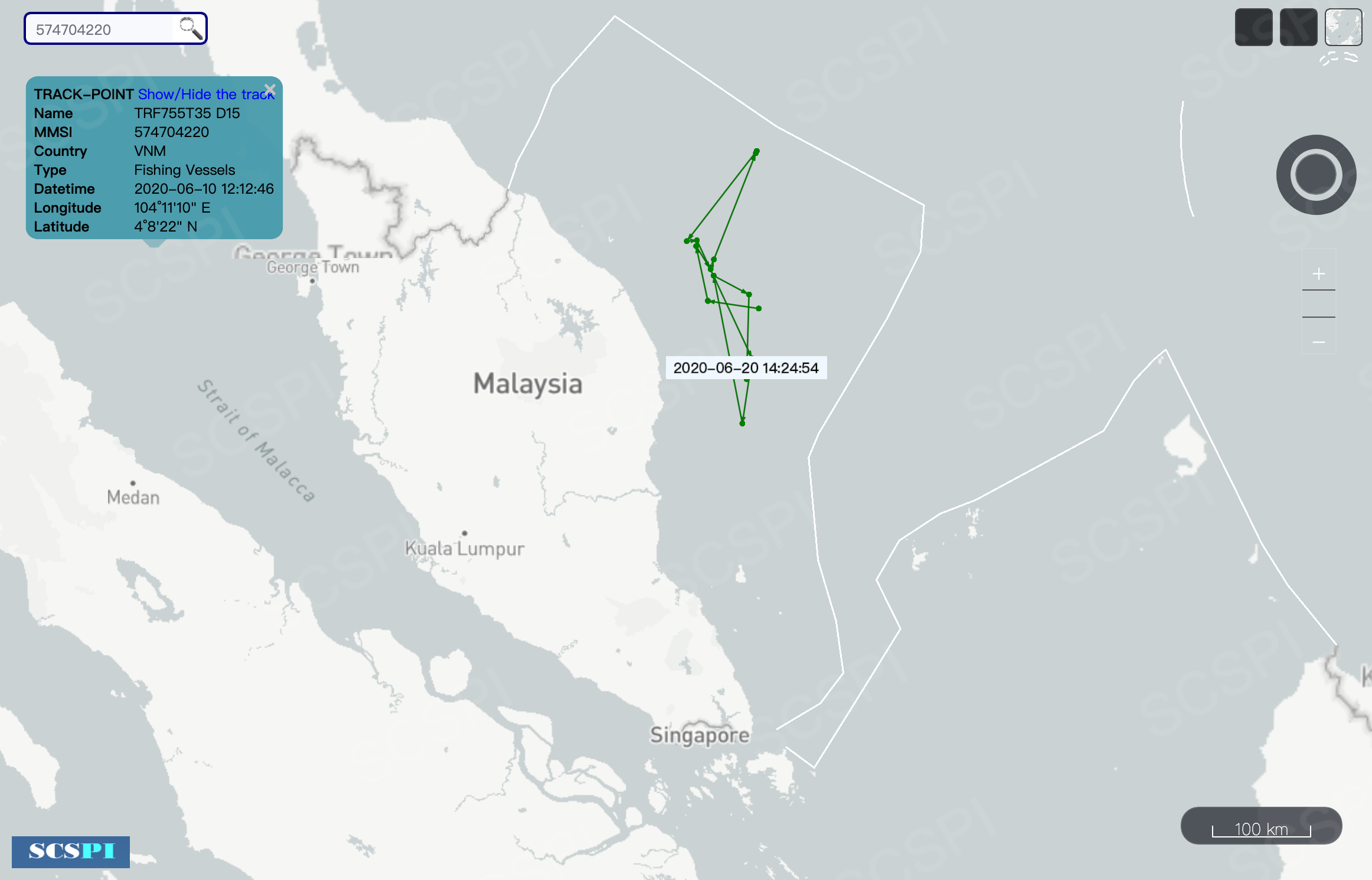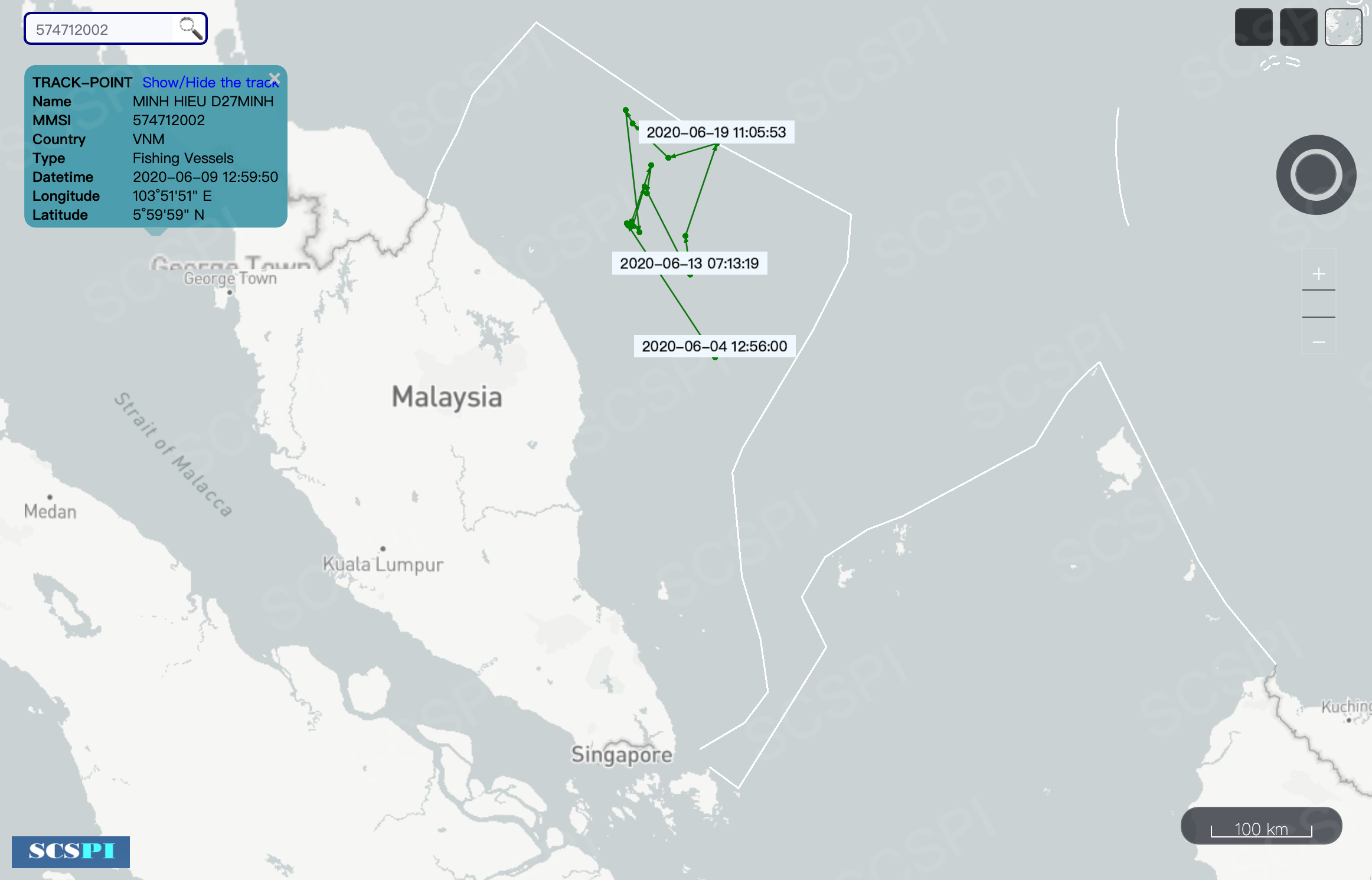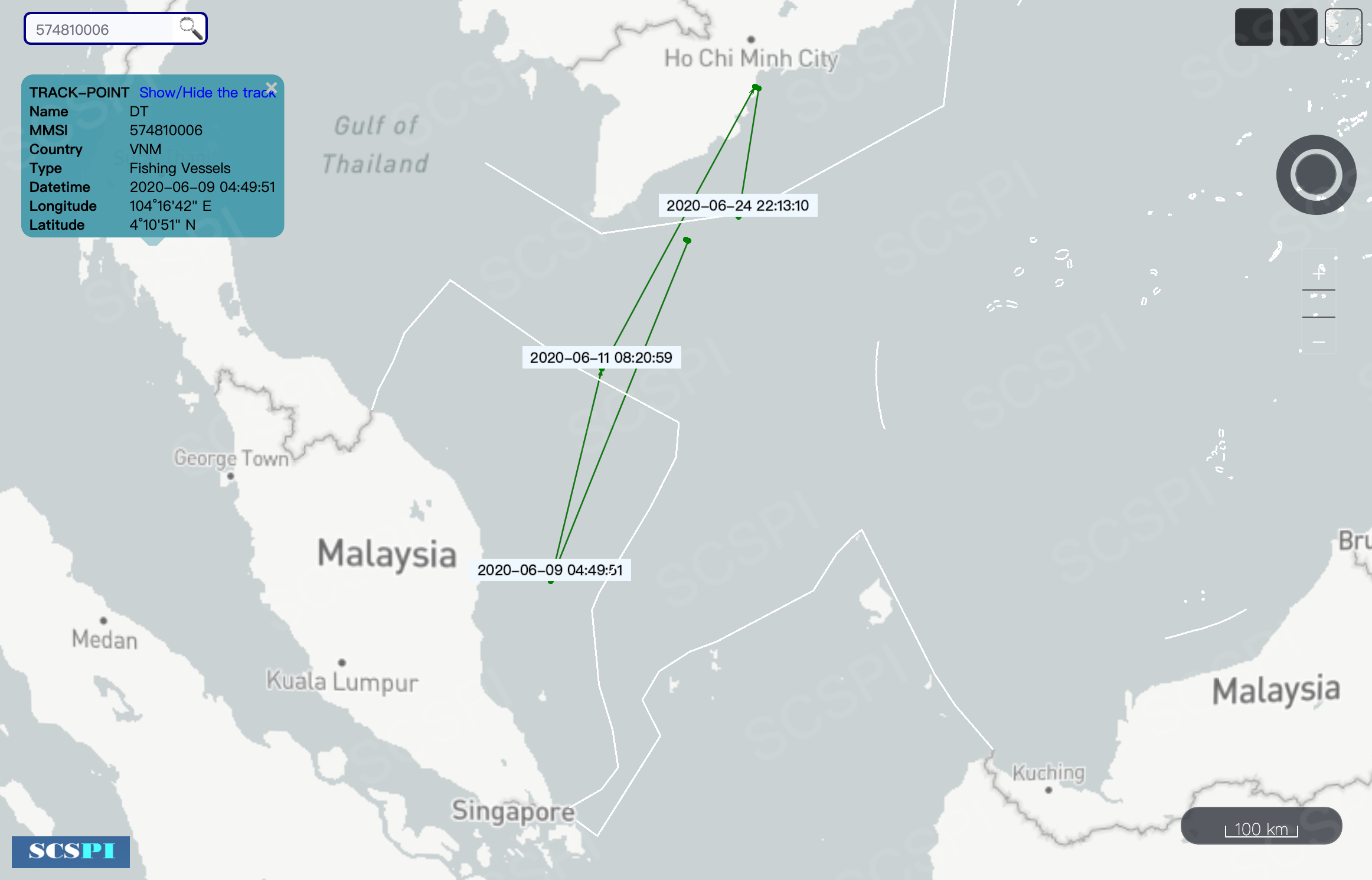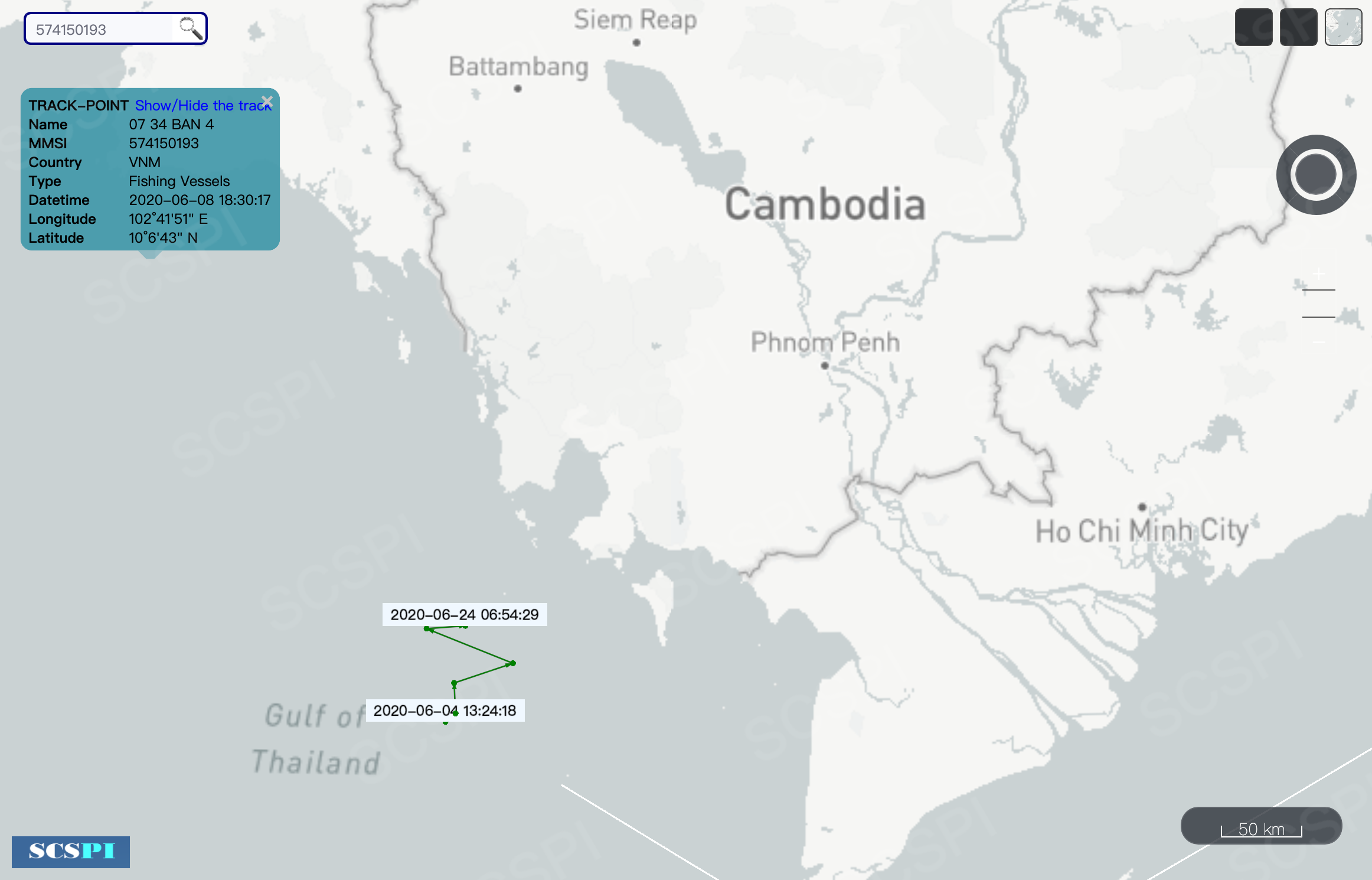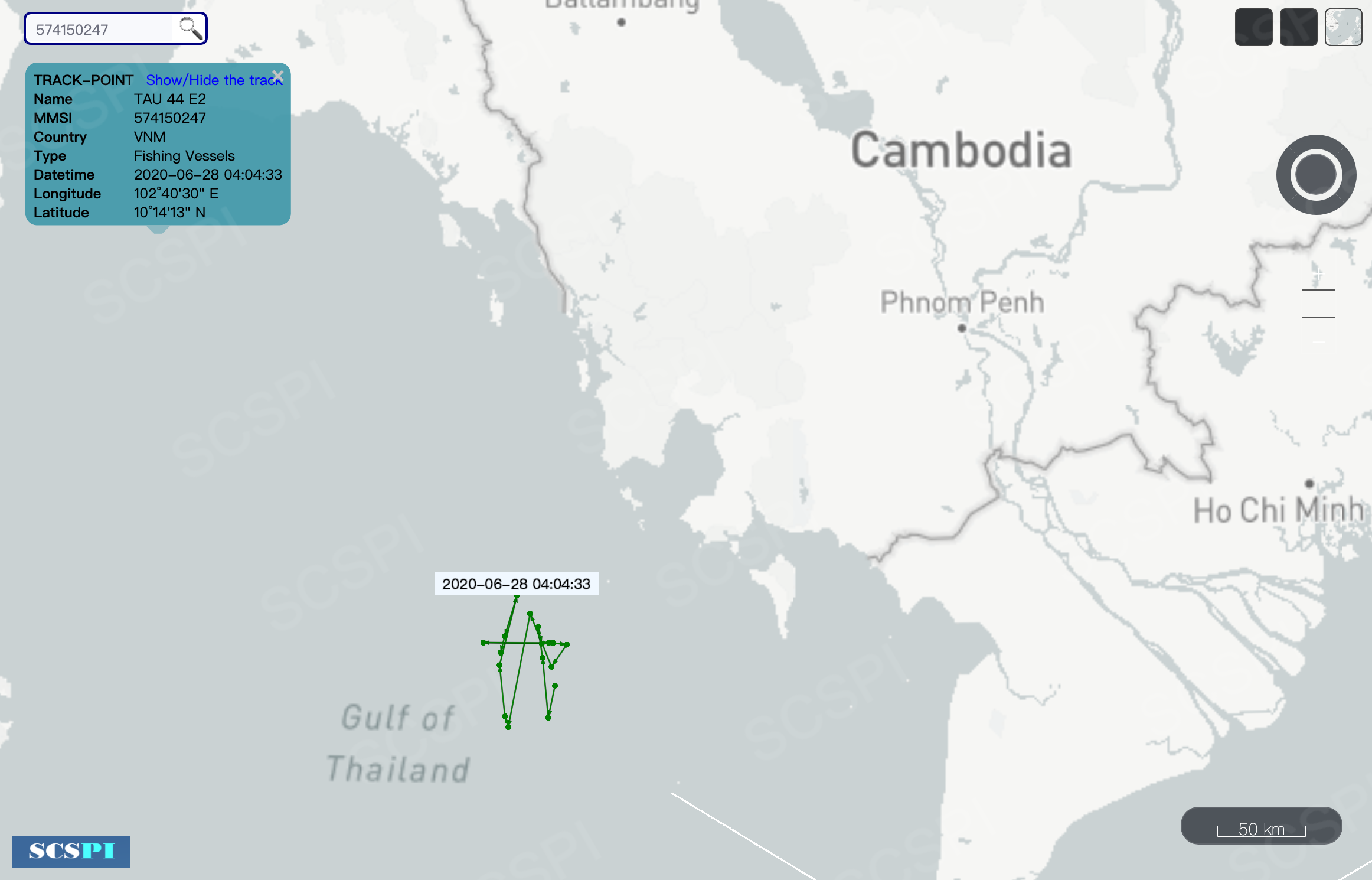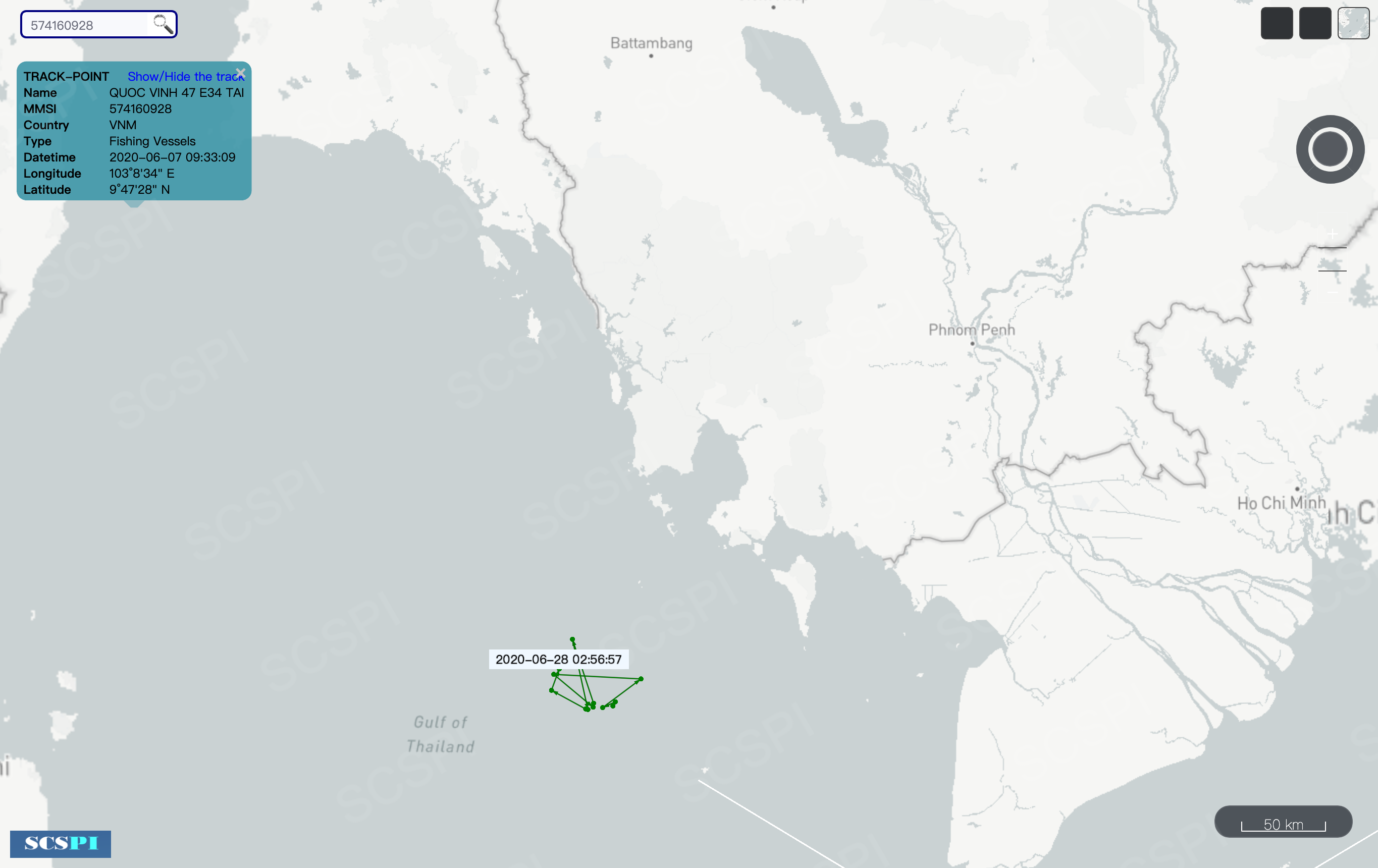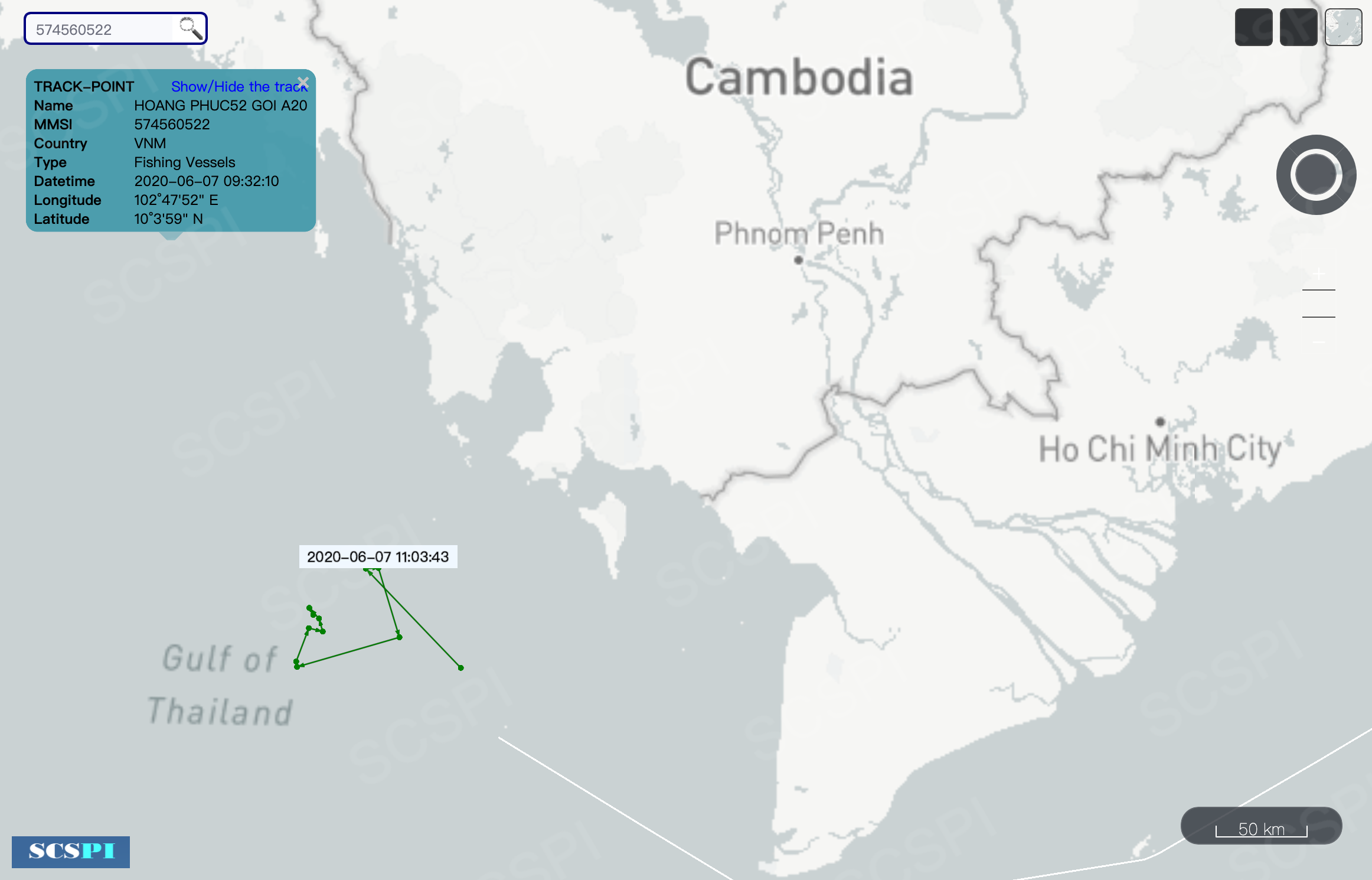In June, a total of 149,785 track points of 9,646 Vietnamese fishing vessels were recorded by the AIS, basically static with those in previous months.

The number of Vietnamese fishing vessels acting illegally in the waters of Malaysia, Indonesia and Cambodia edged down, while those intruding into the waters of Chinese mainland and the Hainan Island sharply increased. The details are as follows:
Coastal Waters of Chinese Mainland and Hainan Island
According to the AIS statistics, in June, at least 692 Vietnamese fishing vessels intruded into the coastal waters of Chinese mainland and the Hainan Island (as illustrated in the figure below, the scope covers the waters of the Beibu Gulf, excluding China’s maritime domain within the common fishery zones; the territorial seas and internal waters of Guangdong Province and the Hainan Island; the southeastern waters of the Hainan Island, as well as the area within around 30 nm beyond the Guangdong Province’s territorial seas). Compared with 569 in May, there is an increase of 123 in June, continuing with the tendency of ballooning.
Among them,75 intruded into China’s territorial seas and internal waters, which rebounded in June after declining to 24 in May.

Download full AIS records of 692 Vietnamese fishing vessels here
Compared with the distribution in March, April and May, this June has witnessed an abnormal gathering of the Vietnamese fishing vessels in the southeastern waters of the Hainan Island, as well as the coastal waters of Jiangmen and Zhuhai, Guangdong Province, and Hong Kong, China. Specifically, a total of 138 Vietnamese fishing vessels intruded into the coastal waters of Guangdong Province, with 24 of them even intruding into the territorial waters and internal waters.
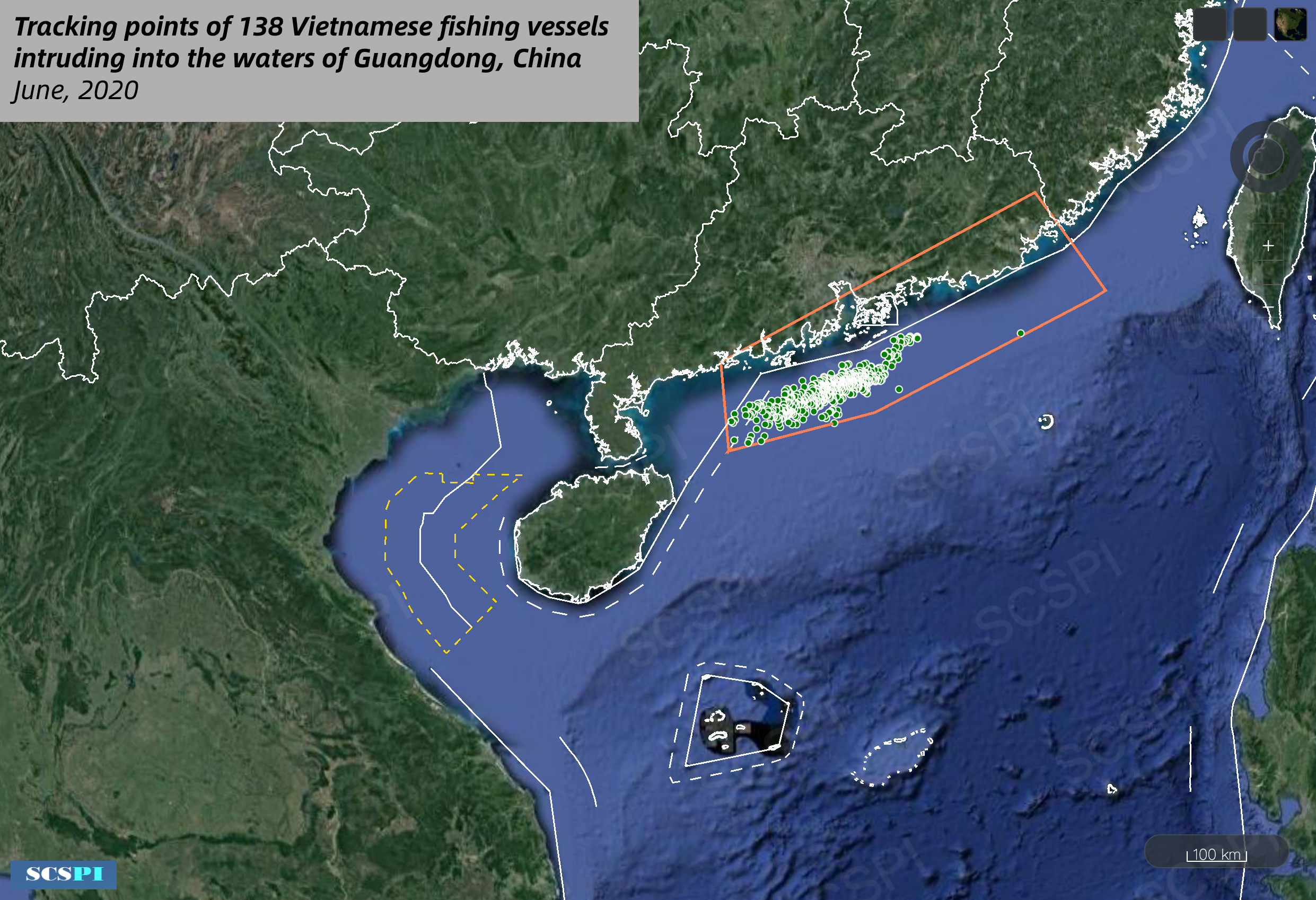
Download full AIS records of 138 Vietnamese fishing vessels here
Since China kicked off the summer fishing moratorium in May 1, 2020, the number of Vietnamese fishing vessels engaging in illegal, unreported, unregulated(IUU) fishing activities in the aforementioned waters of China has risen viciously by over 100 vessels per month for two consecutive months from the number of 379 in April.
Based on our analysis, there are mainly two reasons accounting for the rebound.
First, under the fishing moratorium, most Chinese fishing vessels are not allowed for offshore activities. However, the Vietnamese fishing vessels filled in the “gap” instead. Also attracted by the potential extra income, more Vietnamese fishing vessels joined in the intrusion.
Second, the Vietnamese government reacted strongly to an abnormal extent to China’s summer fishing moratorium this year. Besides protesting at the diplomatic level and whipping up international opinions against China, the Vietnamese government publicly encouraged domestic fishing vessels to resist China’s fishing moratorium with solid actions. Although the protestation was mainly targeted at the waters around the Paracel Islands, the possibility can’t be excluded that the Vietnamese government tacitly approved or even pampered domestic fishing vessels in sailing into the undisputed waters of Chinese mainland and the Hainan Island so as to pressure China.
In fact, under the crackdown of China Coast Guard and other forces, there were evidently fewer Vietnamese fishing vessel recorded in March and April.
By enforcing the summer fishing moratorium, China intends to preserve fishery resources and protect maritime environment. Yet this good will has been viciously exploited by the Vietnamese government. Without the competition and counterbalance of the Chinese fishing vessels, the Vietnamese fishing vessels only need to evade a limited number of China’s law enforcement ships, hence growing unscrupulously.
Boundary Waters of West Malaysia and Indonesia
A total of 245 Vietnamese fishing vessels were tracked to intrude into the boundary waters of West Malaysia and the Natuna Islands of Indonesia, most of which gathered near the territorial seas delimited by the Malaysian government, registering a slight drop from 302 in May.
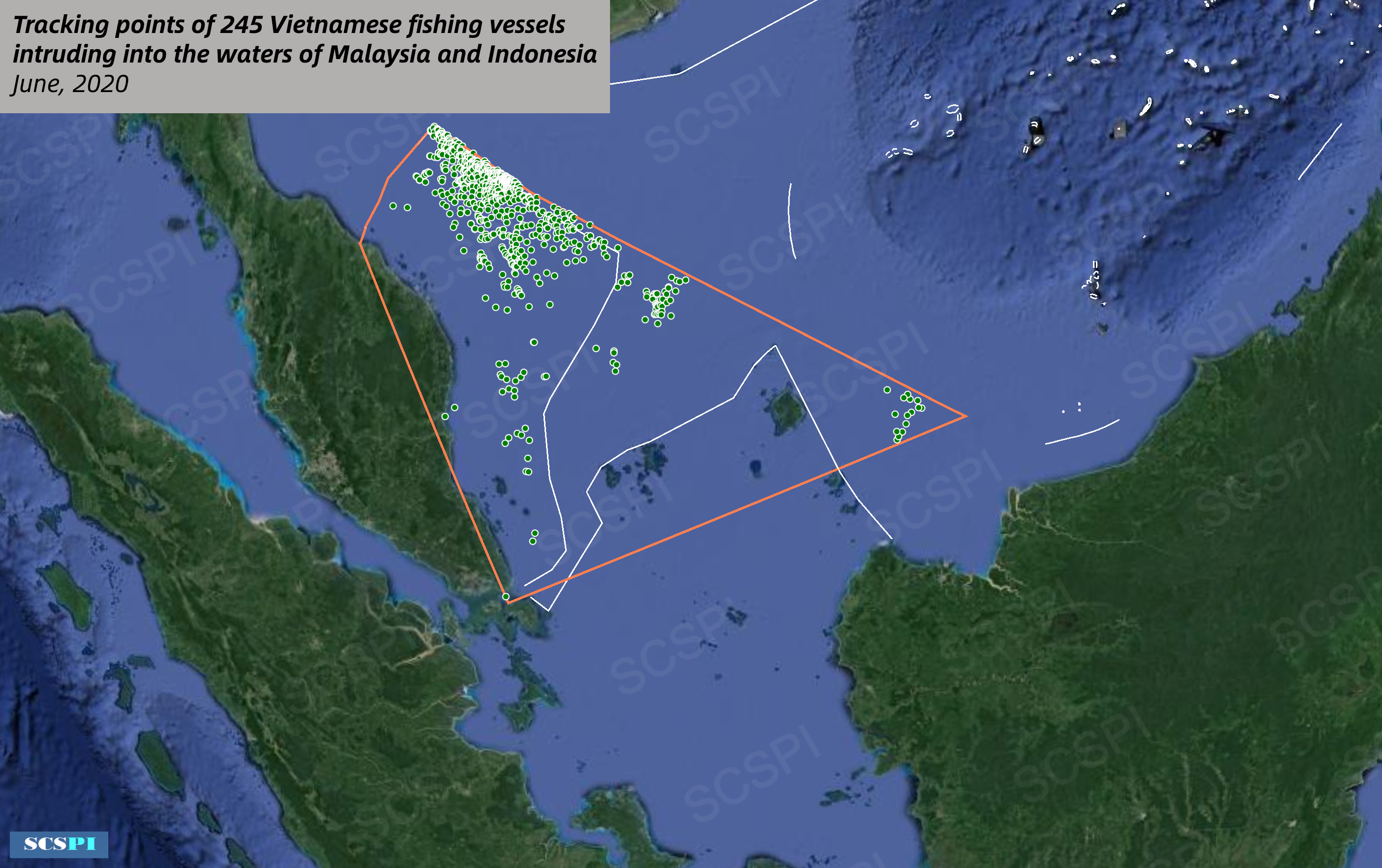
Download full AIS records of 245 Vietnamese fishing vessels here
This is somewhat relevant to the intensified law enforcement of Malaysia Coast Guard. On June 16, KM Langkawi (7501) in a standoff (6°18.42'N, 105°13.70'E) with Vietnamese law enforcement ship KN-261 who tried to negotiate for the release of Vietnam's fisherman intruding on Malaysia claimed EEZ off the coast of Kuala Terengganu. According to Malaysia Coast Guard, a group of Vietnamese fishermen were trying to enter the Malaysian waterfront about 4 nautical miles from the country's EEZ boundary line, who were forced to do 2 warning shots due to the vessel’s refusal to stop.
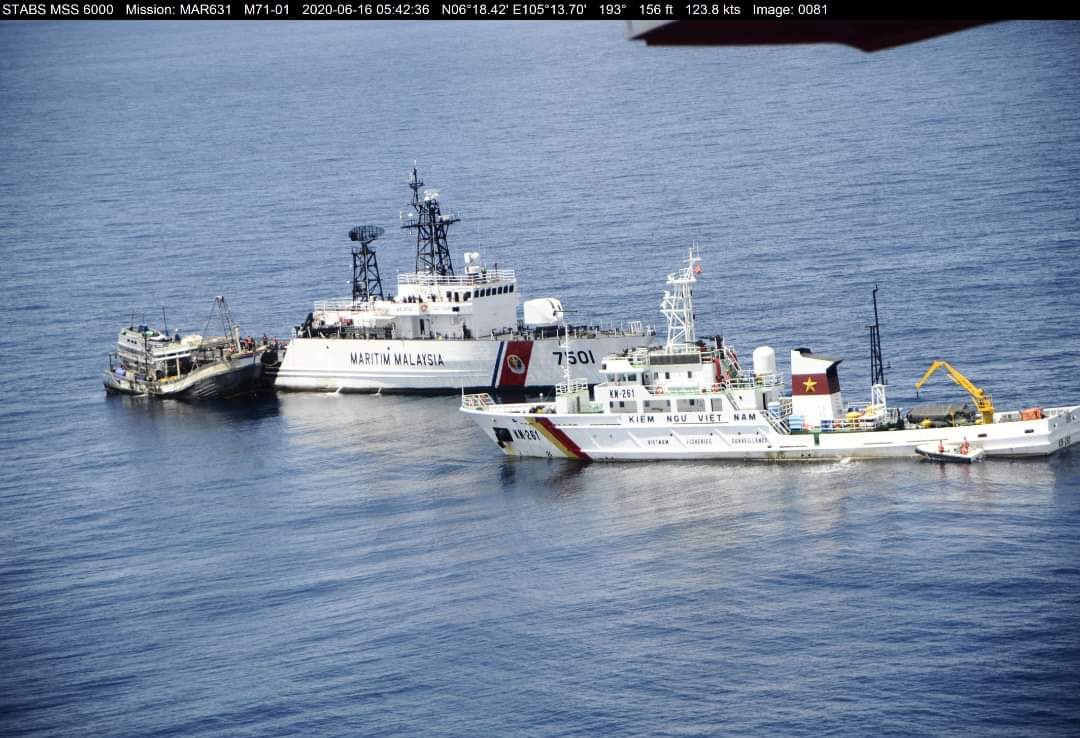
KM Langkawi (7501) in a standoff with Vietnamese law enforcement ship KN-261, June 16
Waters of Cambodia
In June, a total of 157 Vietnamese fishing boats intruded into the waters of Cambodia in the Gulf of Thailand, which represented a slight decrease from 178 in May.
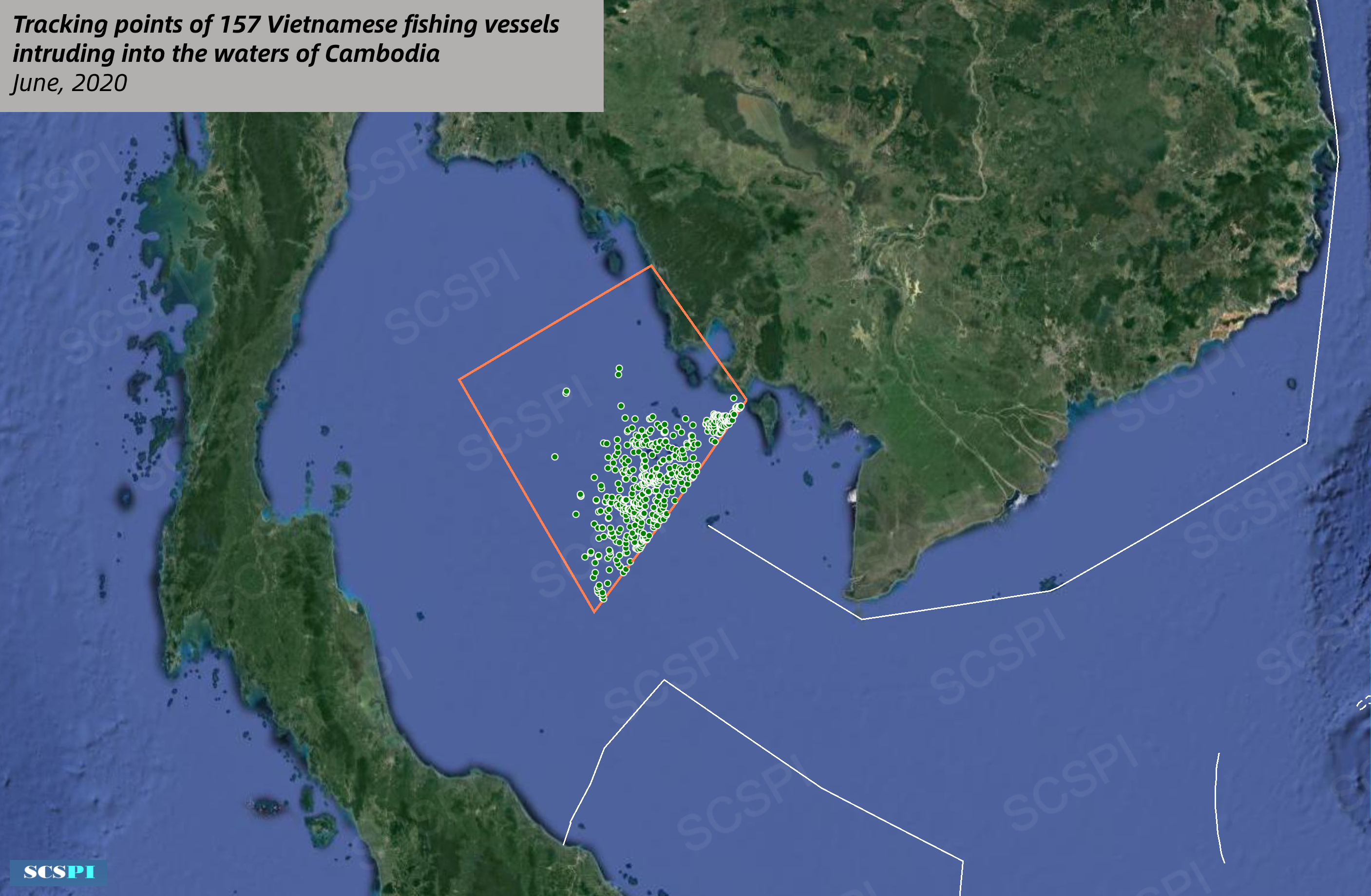
Download full AIS records of 157 Vietnamese fishing vessels here
Some Reflections
From April to June of 2020, the Vietnamese fishing vessels have conflicted with the Coast Guards of Indonesia, Malaysia and China multiple times for engaging in IUU fishing or suspected militia activities in the waters of other coastal states of the South China Sea. Indonesia and Malaysia already disclosed the details of the incidents on April 19 and June 16 with corresponding illustrations.
On one hand, Vietnam repeatedly declares to take measures against IUU fishing; but on the other, it acquiesces in or even pampers its fishing vessels in doing so.
As evidenced by both of the incidents on April 19 and June 16 that, Vietnamese law enforcement ships actually accompany the Vietnamese vessels committing illegal activities, and “stand up for them” as soon as frictions occur.
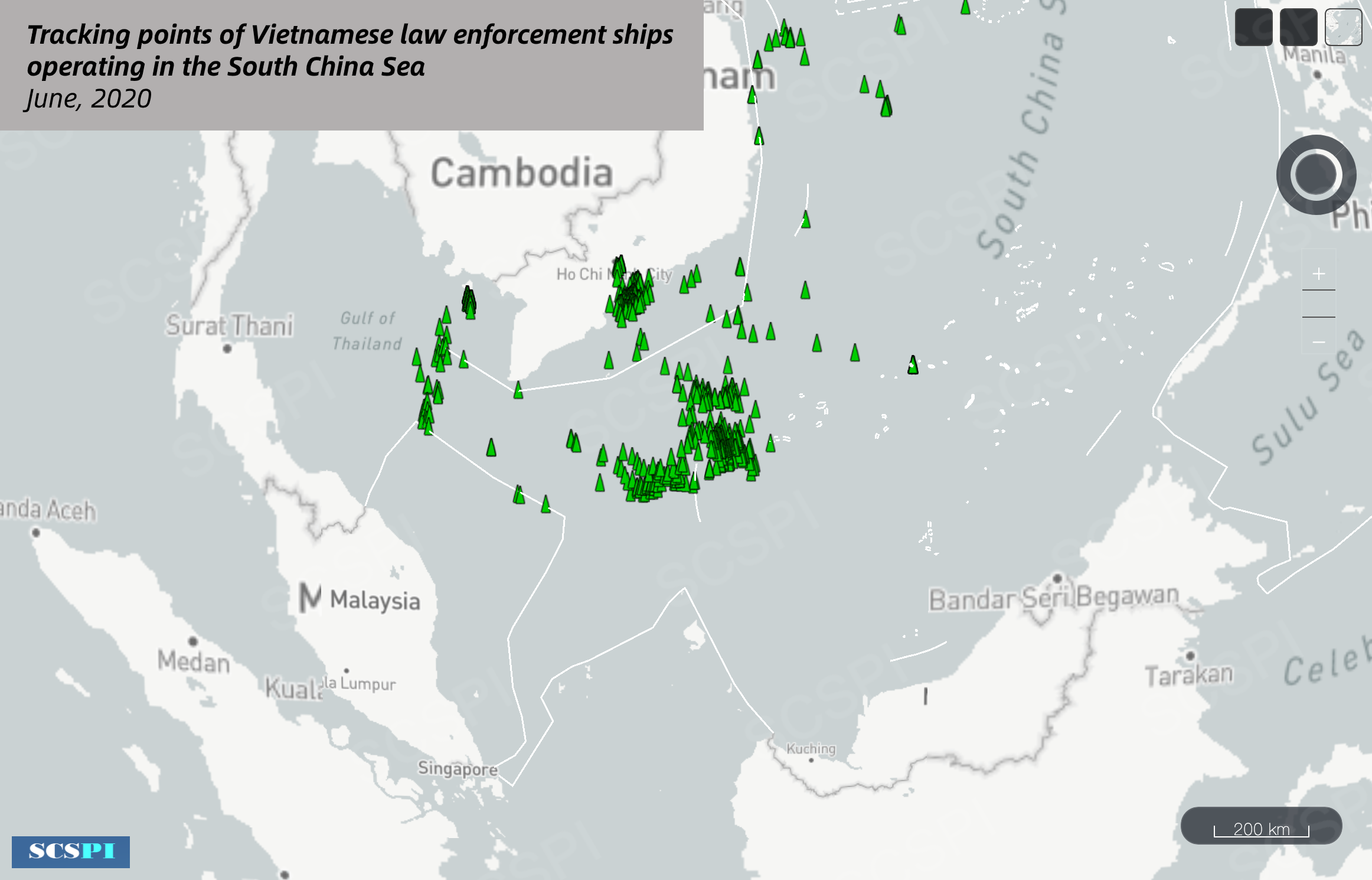
In this context, the illegal activities of Vietnamese fishing vessels in the South China Sea are unlikely to be curbed effectively. Neither the “high-profile regulation” of Malaysia and Indonesia nor the “law enforcement in silence” of China can bear satisfactory results. Nevertheless, the Malaysia and Indonesia’s approach proves relatively effective, thus worth learning for China.
The first is to safeguard sovereignty and maritime rights and interests with all measures necessary. Vietnam may have nothing to refute when it comes to infringement of the waters of Chinese mainland and the Hainan Island, though Vietnam argues that it was “bullied” in the non-disputed waters of Paracel Islands (which Vietnam deems disputed) ,hyping the law enforcement activities of China. In non-disputed waters, the internal waters and territorial seas in particular, all measures can be adopted if needed, only with considering certain humanitarian appeals. Needless to scruple, China has every right to enforce the law within its own territorial seas. Though Malaysia and Indonesia have already taken a tough line on Vietnam including using weapons, their relations with the latter stay unaffected on the whole.
The second is to disclose Vietnam’s illegal activities and relevant law enforcement information in an appropriately way. In recent years, Vietnam is working to depict itself a “good citizen” who follows international rules and never tolerates such illegal activities in public. Therefore, the supervision of international public opinions serves as a powerful tool in forcing Vietnam to restrain itself aside from intensified on-site law enforcement. We had contact with Vietnamese experts and officials regarding the illegal activities of Vietnamese fishing vessels committed in the waters of Chinese mainland and the Hainan Island, all of them contending that “the number is too large to be true. If so, China could take actions.” Furthermore, they went on questioning China, saying that “China is very tough on the activities of Vietnamese fishing vessels in the Paracel Islands. Why does China soften its actions when it comes to the waters of Chinese mainland and the Hainan Island?”
So, China’s well-intentioned behaviors to maintain bilateral relations including the quiet diplomacy and low-profile law enforcement may neither earn appreciation of Vietnam, nor the understanding of the international community. On the contrary, by giving exposure of law enforcement details of the conflict events, Malaysia and Indonesia have imposed powerful deterrence on the illegal activities of Vietnamese fishing vessels.
Appendix
Tracks of 20 typical cases of Vietnamese fishing vessels conducting IUU in June, 2020

